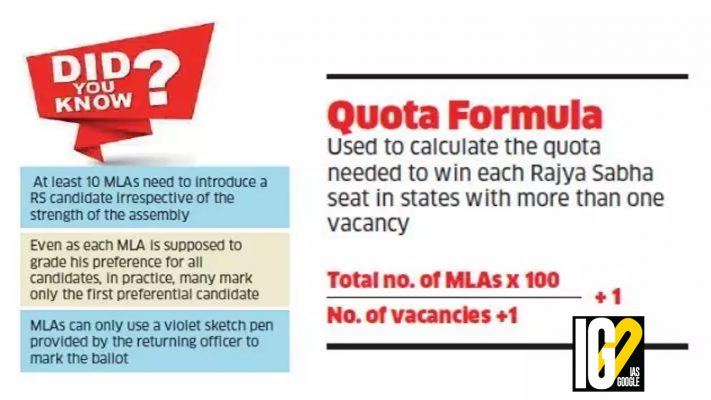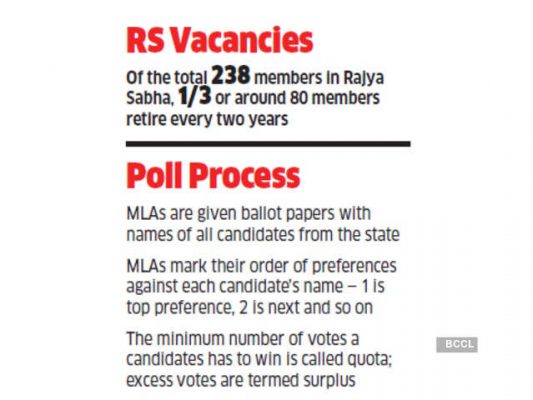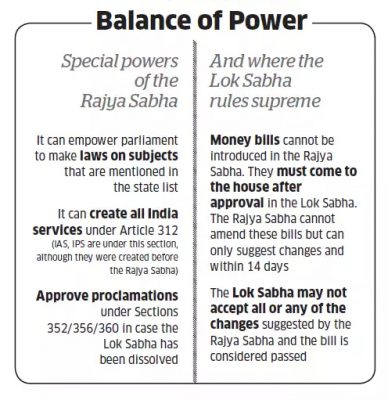- Home
- Prelims
- Mains
- Current Affairs
- Study Materials
- Test Series
Daily Current Affairs | 22nd June 2020
Garib Kalyan Rozgar Abhiyaan: PM Modi launches
Prime Minister Narendra Modi launches Garib Kalyan Rojgar Abhiyaan on 20th June 2020 to boost employment and livelihood opportunities for migrant workers returning to villages, in the wake of COVID-19 outbreak. The Abhiyaan was flagged off from village Telihar, Block Beldaur, district Khagaria, Bihar on June 20.



- An amount of Rs 50,000 Crores would be spent for building durable rural infrastructure under the Garib Kalyan Rojgar Abhiyaan.
- 25 work areas have been identified for employment in villages, for development of various works. These 25 works or projects are related to meet the needs of the villages like rural housing for the poor, Plantations, provision of drinking water through Jal Jeevan mission, Panchayat Bhavans, community toilets, rural mandis, rural roads, other infrastructure like Cattle Sheds, Anganwadi Bhavans etc.
- The Abhiyan shall also provide modern facilities in rural areas such as high speed and cheap internet in every rural household to help the youth and children. It is the first time that the rural areas are using more internet than the urban areas. Hence the laying of fibre cable and provision of internet are also made a part of the Abhiyan.
- These works will be done while staying in his own village, while staying with his family.
- The farmers are being directly linked to the market and that the Government has provided an investment of Rs 1,00,000 Crore for linkages like cold storage etc.
- This Abhiyaan of 125 days, will work in mission mode, will involve focused implementation of 25 categories of works/ activities in 116 districts, each with a large concentration of returnee migrant workers in 6 states of Bihar, Uttar Pradesh, Madhya Pradesh, Rajasthan, Jharkhand and Odisha.
- Public works to be undertaken during this campaign will have a resource envelope of Rs. 50,000 crores.
- The Abhiyaan will be a convergent effort between 12 different Ministries/Departments, namely; Rural Development, Panchayati Raj, Road Transport & Highways, Mines, Drinking Water & Sanitation, Environment, Railways, Petroleum & Natural Gas, New & Renewable Energy, Border Roads, Telecom and Agriculture, to expedite implementation of 25 public infrastructure works and works relating to augmentation of livelihood opportunities.
- The Ministry of Rural Development is the nodal Ministry for this campaign and the campaign will be implemented in close coordination with the State Governments. Central Nodal Officers of the rank of Joint Secretary and above will be appointed to oversee the effective and timely implementation of various schemes in the identified districts.
- Provide livelihood opportunity to returning migrants and similarly affected rural citizens
- Saturate villages with public infrastructure and create livelihood opportunities viz. Roads, Housing, Anganwadis, Panchayat Bhavans, various livelihood assets and Community Complexes among others
- The basket of a wide variety of works will ensure that each migrant worker is able to get an opportunity of employment according to his skill, in the coming 125 days. The Program will also prepare for expansion and development of livelihoods over a longer term.
- Aspirational Districts are those districts in India, that are affected by poor socio-economic indicators. These are aspirational in the context, that improvement in these districts can lead to the overall improvement in human development in India. The 115 districts were identified from 28 states, at least one from each state.
- Objective – Achieve balanced development in India by uplifting 115 districts.
- Under phase-1 of ADP, 115 districts were identified based on the level of human development, physical infrastructure, threat of left wing extremism (LWE) and the views of the state governments.
- Over 15 percent of India’s population lives in these districts. A list of 49 target indicators has been developed by NITI Aayog. Relatively poorer endowment of physical resources, lack of infrastructure, poor social capital, low standards of health, nutrition, education and skill, poor governance and above all, inhabitants demotivated due to years of poverty and deprivation can be cited as major contributory factors.
- Decentralized Development: ADP focuses on outcomes, that enables local experimentation based on a firm appreciation of ground realities.
- Inclusive: The delta ranking of the Aspirational Districts combines the innovative use of data with pragmatic administration, keeping the district at the locus of inclusive development.
- Progress: Through ADP government seeks to uplift those districts which have shown relatively lesser progress in achieving key social outcomes.
- Implementation: Spurred by competition based on outcomes, local governments target their efforts and improve programme implementation and design. For Example, Health outcomes in ADP saw an increase in registering pregnant women into the health system, institutional delivery of babies and anti-diarrheal treatment, etc.
- Governance challenges – Governance inadequacy; Multiplicity of implementing agencies and schemes.
- No accountability on the part of either the government or district administrations.
- Non availability of periodical data.
- Lack of social awareness and community participation.
- Lack of competitiveness among districts to improve developmental performance.
- Data High-quality administrative data is critical to improving programme implementation and design at the local level.
- Create a positive narrative of development by making development a mass movement – Referring to these districts as ‘aspirational’ rather than ‘backward’ highlights the programme’s recognition that people are the most valuable resource to improve a district’s performance.
- Use data to inform decision-making and spur competition among districts – Composite index and Data – NITI Aayog has identified 49 key performance indicators (KPIs) with 81 data points. The ADP assigns different weights to the indicators, informed by a policy focus on social sectors. Health and nutrition, and education have been given the highest weightage and cumulatively, they account for 21 of the 49 indicators.
- Converge initiatives across all levels of government – The ADP aims to ensure convergence between different government schemes. To achieve this, the action plan prepared by the district collectors of aspirational districts will identify the thrust activity, map existing schemes and their respective implementation agencies and set targets for rapid improvement.
- Promote federalism and put in place institutional mechanisms to ensure teamwork between the central, state and districts administration – Harnessing and creating synergies among the different stakeholders is the backbone of the ADP. While states are the main drivers and district magistrates/collectors are the fulcrum of the programme, a major innovation here is the emphasis on team foundation. Set up Empowered Committees of Secretaries of Government of India to supervise and troubleshoot.
- Partner with expert organisations with demonstrated technical competence – While data-based objective ranking and competition among districts are major elements of the ADP’s strategy, another core component is bringing in technical expertise through public private partnerships.
- National Testing Agency (NTA) conducts competitive exams like JEE and NEET has launched its Artificial Intelligence (AI)-powered smartphone app to empower engineering and medical aspirants to prepare safely from their homes, for entrance exams including JEE Main, NEET.
- National Testing Agency (NTA) was established as a Society registered under the Indian Societies Registration Act, 1860.
- It is an autonomous and self-sustained testing organisation to conduct entrance examinations for admission/fellowship in higher educational institutions.
- It is to conduct efficient, transparent and international standards tests in order to assess the competency of candidates for admission and recruitment purposes.
- NTA is chaired by an eminent educationist appointed by the Ministry of Human Resource Development. The Chief Executive Officer (CEO) will be the Director-General to be appointed by the Government. There will be a Board of Governors comprising members from user institutions.
- Only elected members of the State Legislative Assemblies can vote in a Rajya Sabha election. The legislators send a batch of new members to the Upper House every two years for a six-year term.
- A third of Members of Parliament in the Rajya Sabha (which is a permanent House and is not subject to dissolution), from each State retire once in two years and polls are held to fill up the vacancies.
- In addition, vacancies that arise due to resignation, death or disqualification are filled up through bypolls after which those elected serve out the remainder of their predecessors’ term.
- Voting is by single transferable vote, as the election is held on the principle of proportional representation. In other words, a bloc of MPs belonging to one or more parties can elect a member of their choice if they have the requisite numbers. This is to avoid the principle of majority, which would mean that only candidates put up by ruling parties in the respective States will be elected.
- The Delhi and Puducherry Assemblies elect members to the Rajya Sabha to represent the two Union Territories.
- Polling for a Rajya Sabha election will be held only if the number of candidates exceeds the number of vacancies.
- Since the strength of each party in the Assembly is known, it is not difficult to estimate the number of seats a party would win in the Rajya Sabha poll. For instance, if there are four seats to be filled up, and the ruling party and its allies command a two-thirds majority, and the Opposition a third, it will mean that the election will go three seats to one in favour of the ruling party.
- In many States, parties avoid a contest by fielding candidates only in respect to their strength. Where an extra candidate enters the fray, voting becomes necessary.
- Candidates fielded by political parties have to be proposed by at least 10 members of the Assembly or 10% of the party’s strength in the House, whichever is less. For independents, there should be 10 proposers, all of whom should be members of the Assembly.


- A single transferable vote means electors can vote for any number of candidates in order of their preference. A candidate requires a specified number of first preference votes to win.
- Each first choice vote has a value of 100 in the first round. To qualify, a candidate needs one point more than the quotient obtained by dividing the total value of the number of seats for which elections are taking place plus one. For instance, if there are four seats and 180 MLAs voting, the qualifying number will be 180/5= 36 votes or a value of 3,600. Normally, the results are clear after one round itself. The extra candidate is eliminated for want of enough first preference votes.
- However, counting may go to the second round, if more than one candidate fails to get the specified number. In such a situation, the second preference polled by the candidates (in ballots where the first preference has gone to those already qualified) will be transferred to their kitty, but with a diminished value. The total value of the votes polled by the remaining candidates both as first and subsequent preferences would be used to decide the winner.
- The Rajya Sabha polls have a system of open ballot, but it is a limited form of openness. As a measure to check rampant cross-voting, which was taken to mean that the vote had been purchased by corrupt means, the system of each party MLA showing his or her marked ballots to the party’s authorised agent, before they are put into the ballot box, has been introduced.
- Showing a marked ballot to anyone other than one’s own party’s authorised agent will render the vote invalid. Not showing the ballot to the authorised agent will also mean that the vote cannot be counted. And independent candidates are barred from showing their ballots to anyone.
- While taking oath as a member is for anyone to function as a legislator, the Supreme Court has ruled that a member can vote in a Rajya Sabha election even before taking oath as legislator. It ruled that voting at the Rajya Sabha polls, being a non-legislative activity, can be performed without taking oath.
- A person becomes a member as soon as the list of elected members is notified by the ECI, it said. Further, a member can also propose a candidate before taking oath.










 Latest News
Latest News
 General Studies
General Studies